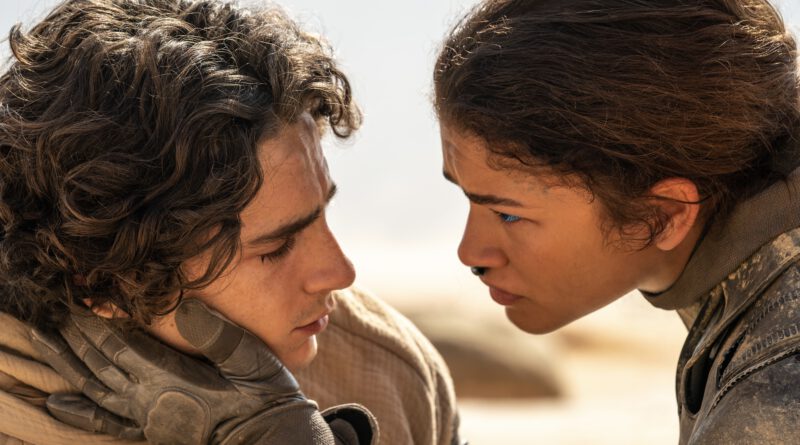‘Dune: Part Two’ review: Denis Villeneuve’s sci-fi masterpiece soars, then screams to a halt
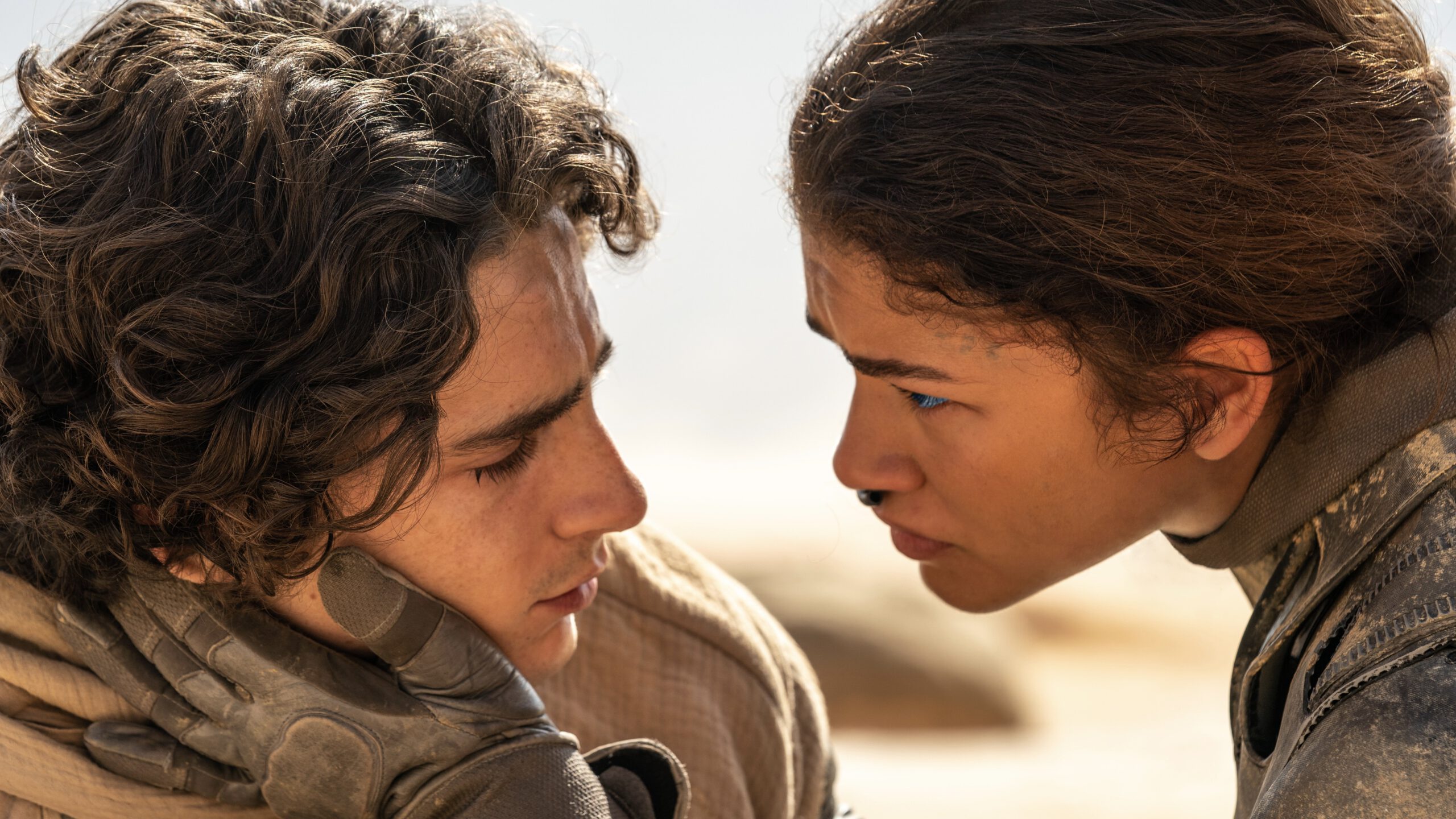
Few things make me happier than Dune becoming an inescapable pop cultural phenomenon.
Here is a story of psychedelic space drugs, gargantuan sandworms, and women who can control others with just their voice. Here is a lore-dense sci-fi masterwork, a cautionary tale about messianic figures, and an ecological treatise all rolled into one. It’s deeply weird and wonderful, and somehow it’s spawned film premieres crowded with screaming fans, crashed ticket sites, and gifted us one very strange tie-in popcorn bucket.
Yes, Frank Herbert’s work has always had its obsessives. But with the release of Denis Villeneuve’s 2021 film adaptation — featuring buzz-worthy stars like Timothée Chalamet and Zendaya — Dune‘s desert power grew stronger than ever. Now, all eyes turn to Dune: Part Two to see if the director can recreate the Academy Award-winning magic trick of his first outing on Arrakis.
For the most part, Dune: Part Two succeeds on the highest of levels. Villeneuve uses Dune‘s more contemplative set-up as a springboard, launching into explosive bouts of action, galactic intrigue, and tragedy. As a result, the film swings bigger and often hits harder, soaring beyond even the epic highs of its predecessor. Yet these highs make the few moments when Dune: Part Two pulls its punches —including an unfortunately abrupt ending — stick out like a clueless offworlder stranded in the Arrakeen desert.
Dune: Part Two picks up right after the events of Dune.
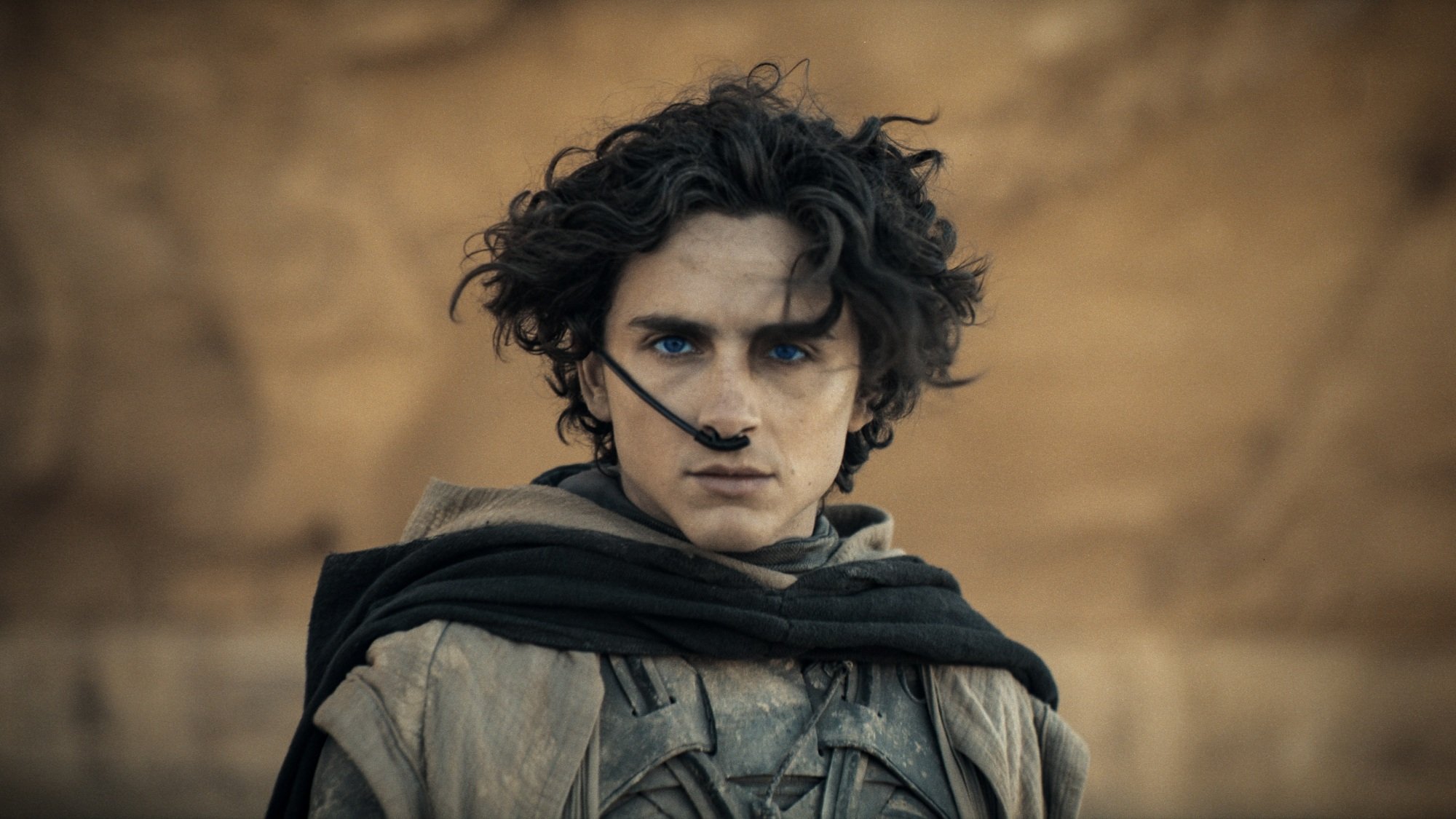
Dune: Part Two returns us to said Arrakeen desert directly in the wake of Dune. Paul Atreides (Chalamet) and his Bene Gesserit mother Jessica (Rebecca Ferguson) have just joined up with Arrakis’ indigenous Fremen people. They hope to gain their trust and allegiance in the fight against the vicious Harkonnen family, who now hold power over the entire planet. Meanwhile, the Emperor Shaddam Corrino (Christopher Walken) and his daughter Princess Irulan (Florence Pugh) assess the situation on Arrakis from afar.
Making matters more complicated for Paul is the prophecy among the Fremen people that a messiah — the Lisan al-Gaib, or “Voice From the Outer World” — will lead them to freedom. Paul’s arrival, as well as his budding prescient power and understanding of Fremen culture, are among the signs of the prophecy. But how much of this is fate, and how much of it is centuries-old Bene Gesserit propaganda at work? If the Fremen follow Paul, will they truly find the paradise they seek? Or will they instead find themselves enslaved, caught up in the holy war that haunts Paul’s visions?
This tension between faith and exploitation makes for compelling friction within the Fremen ranks. Leader Stilgar (Javier Bardem) firmly believes Paul is the Lisan al-Gaib, while warrior Chani (Zendaya) asserts that the prophecy is a sham, and that only the Fremen can free themselves. Caught between the two camps, and with his mother leaning more into religious manipulation, Paul attempts not to lead but to fight alongside the Fremen. His journey will take him many unexpected places: a romance with Chani, a ride on the back of a sandworm, and perhaps down a road towards a bloody, inevitable destiny.
Zendaya’s Chani takes center stage in Dune: Part Two.
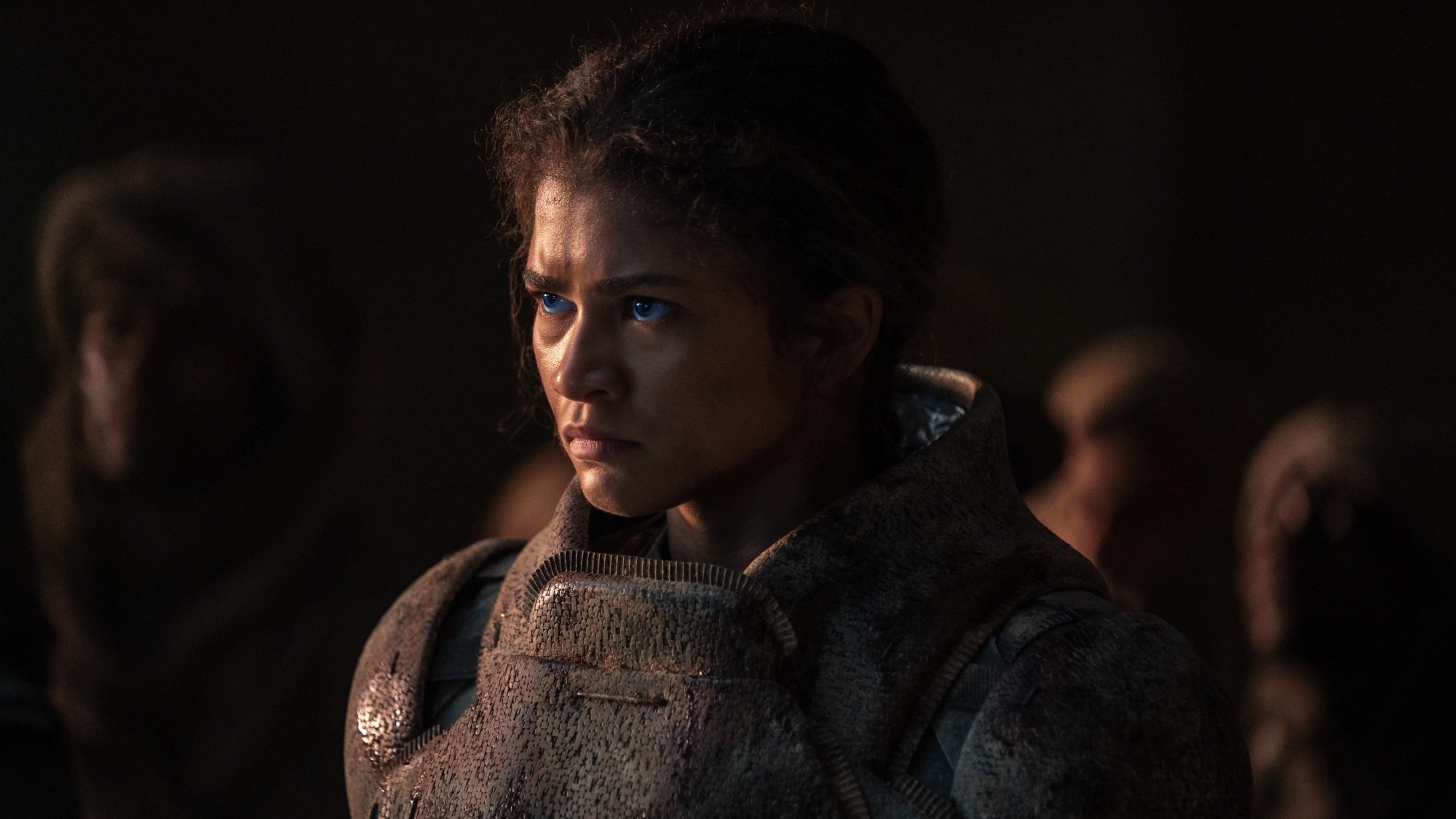
Dune may have underutilized Zendaya, relegating her to Paul’s visions, but Dune: Part Two gives her space to flex her impressive talents. It is as much Chani’s story as it is Paul’s. From their first flirtatious sandwalk to their first joint attack on a Harkonnen spice harvester, Villeneuve makes sure to chart their relationship as one of equals. Paul even tells Chani outright he’d like to be considered as such — a statement that leads to their first kiss, a sweeping moment of sweetness shared among the vast dunes.
However, that equality invariably shifts as Paul’s influence grows, and Chani must reckon with the fact that the man she loves is gaining control over her people. While Chalamet dips deeper into Paul’s darker side, Zendaya layers Chani’s stoic warrior countenance with wounded betrayal. If there was ever any doubt that Paul is not a hero, all it takes is one look at Zendaya’s troubled face during the film’s climax to realize we’re witnessing tragedy in motion.
As Dune: Part Two makes very clear, this is not a story that glorifies a white savior, nor is it a joyful epic of good triumphing over evil. It’s a portrait of the insidious ways in which faith can be manipulated. Chani, with all her loyalty to the Fremen and desire to see them prosper independently, is our gateway into understanding that horror from a Fremen perspective. Without that focus on Chani, and without Zendaya’s effective surfacing of her growing mistrust, Dune: Part Two would crumble.
Dune: Part Two delivers sci-fi action and strangeness aplenty — much of it thanks to Austin Butler.
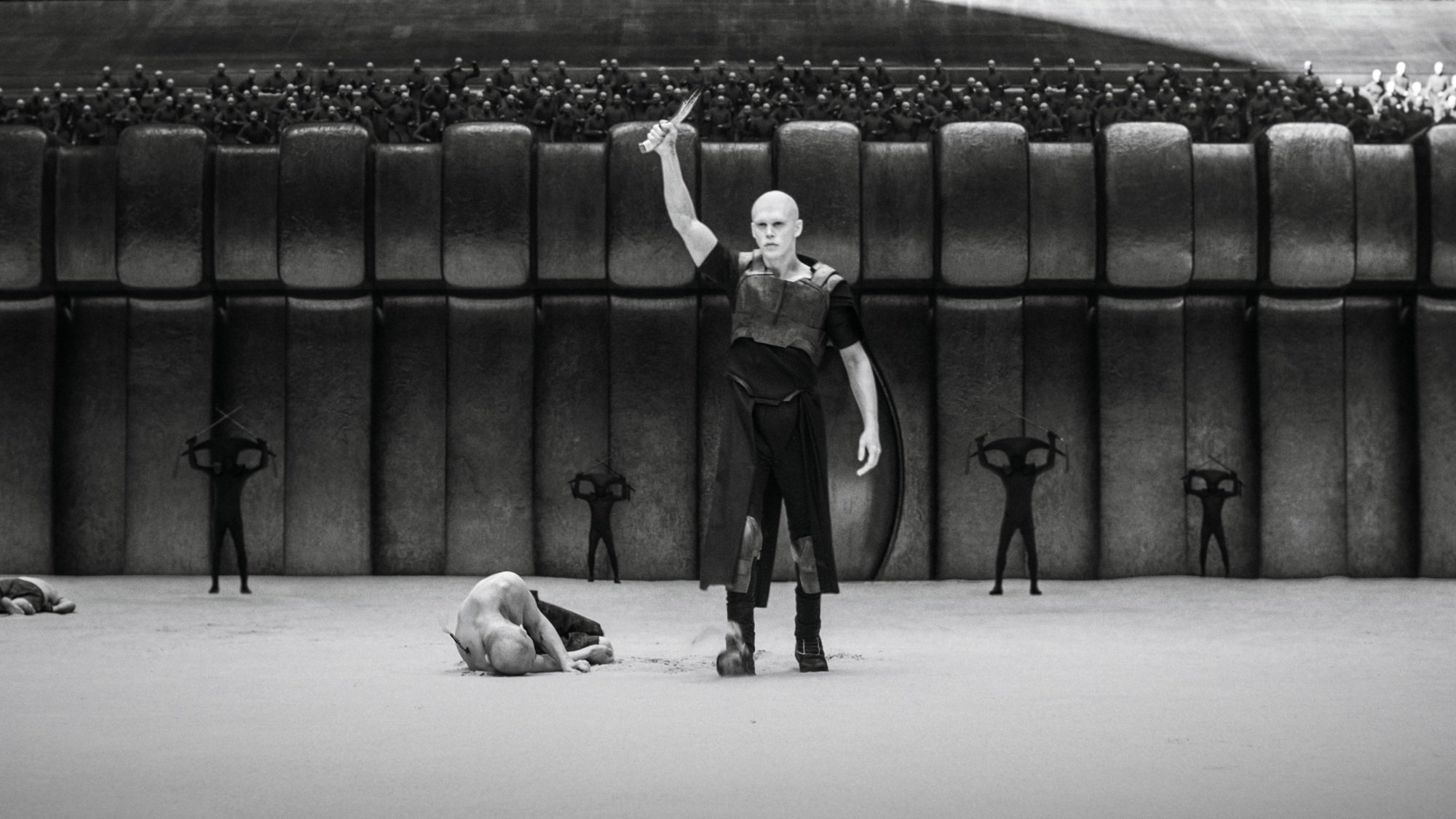
As somber as Dune: Part Two can get, Villeneuve never loses sight of its potential for blockbuster action. He and cinematographer Greig Fraser create arresting tableaus as the battle for Arrakis rages on. An eclipse turns the sky and sands a dark orange. Fremen warriors burst like ghosts from beneath the sand. A figure in a billowing cloak strides across the desert, their sandworm mount breaching the sand behind them.
Dune: Part Two‘s most rousing action sequences are those that understand Dune is at its most exciting when it embraces the epic as well as the weird. Here, that takes the shape of an extended stay on the Harkonnens’ home planet of Giedi Prime, where a dark sun renders everything in stark black and white, and where architecture bulges and bends in ways that recall insects and bodily organs alike.
We’re already familiar with the Baron Vladimir Harkonnen (Stellan Skarsgård) and his nephew Rabban (Dave Bautista): two totally bald, pale baddies with a propensity for brutality, hoarse whispers, and floating menacingly above others with the help of biomechanical implants. Yet their glorious strangeness is just an appetizer for the bizarro lightning in a bottle that is Austin Butler as the Baron’s younger nephew, Feyd Rautha.
Feyd bursts onto the scene like an angular, greased-up stick of dynamite. He’s part supermodel of the future, part sadist, and all killing machine. Marvel at Butler’s pitch-perfect Skarsgård voice (no trace of Elvis here, folks!), the gusto with which he attacks his gladiatorial combat scenes, and the sheer fun he seems to be having. This is why we come to the movies: to see actors letting their freak flags fly against a backdrop of strange new worlds.
Dune: Part Two is incredible, but it isn’t complete.
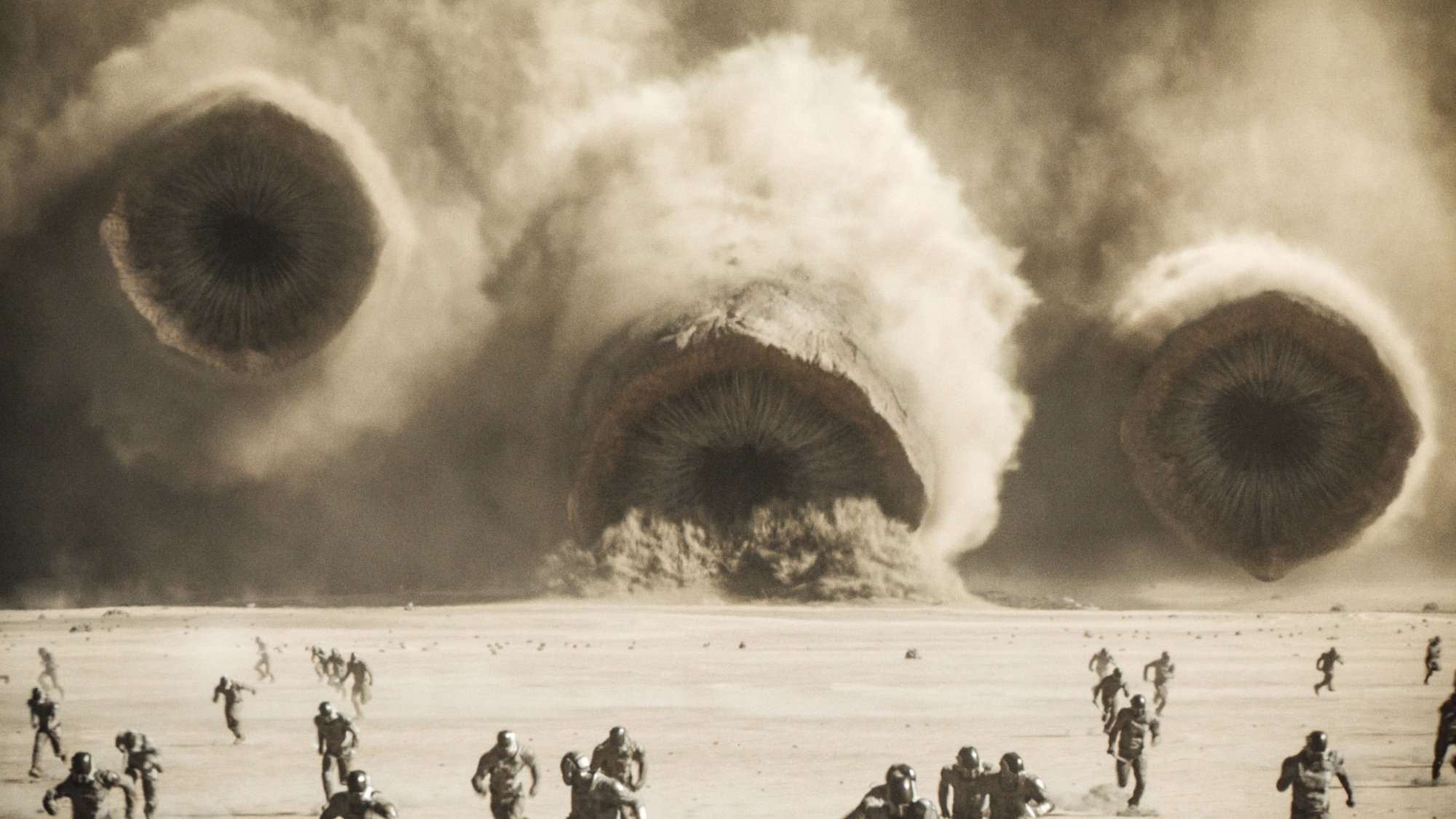
For all its thematic resonance and unforgettable set pieces, there are times when it feels as if Dune: Part Two is holding itself back. Take its treatment of Paul’s visions of the future or Jessica’s ritual to become the Fremen’s new Reverend Mother. These should be overwhelming sensory experiences, ones that tear at a character’s very understanding of space and time. Instead, Dune: Part Two falls back on the first Dune‘s tried-and-true tactic of flashes of repeated imagery and distorted voices. These can only do so much. Elsewhere, Pugh and Walken are mostly shoved to the sidelines for expository purposes, a choice fairly in keeping with Herbert’s work that unfortunately squanders the star power at Dune: Part Two‘s disposal. (Like with Zendaya in Dune, though, there are teases that both the Emperor and Irulan may have greater roles to play in a potential future installment.)
Jessica’s pregnancy, revealed in Dune, presents another missed opportunity. We get glimpses of her growing child throughout the film thanks to some close-ups of a growing fetus. It’s a bold move from Villeneuve that recalls Stanley Kubrick’s 2001: A Space Odyssey, another sci-fi great. Yet those same close-ups, which initially promise something new and strange (and very exciting for fans of Herbert’s novel), slowly plateau into stagnation, with the promise of true boldness pushed down the line.
Speaking of pushing things down the line, it’s hard to discuss Dune: Part Two without bringing up its ending (which we can without spoilers). On one hand, the film’s final moments left me in a state of shock and awe, buzzing to see more. On the other, Dune: Part Two lacks a sense of closure — the same problem as its predecessor. If the first Dune plays like one half of a whole movie, Dune: Part Two plays like the second act of a whole movie, instead of its conclusion. And I say this as someone who desperately wants Villeneuve to make Dune Messiah, the next book in Herbert’s series of six Dune novels.
Dune: Part Two isn’t the only major blockbuster to unceremoniously cut itself off to tease a sequel. In 2023 alone, we saw this trend pop up to varying degrees with the likes of Spider-Man: Across the Spider-Verse, Fast X, and Mission: Impossible — Dead Reckoning Part One. No matter how great those movies are, their cliffhanger endings feel like a glass of cold water to the face — and a reminder that you’ll need to come back in order to get the full story. In the case of Dune, I’m certainly excited to be getting more. But man, am I frustrated that the movie industry seems to think that this is how we have to end films in order to keep people interested.
Neither the abrupt ending of Dune: Part Two nor its moments of holding back keep it from reaching greatness. The film’s renewed focus on Chani cuts straight to the core of Herbert’s work, while its vast scope and intricate worldbuilding make for an immersive, otherworldly experience. Because of this, I still firmly believe Dune: Part Two belongs in the ranks of film’s best sequels and sci-fi offerings. Still, like Paul and his myriad versions of an uncertain future, you can’t help but wonder what might have been had the film taken a slightly different, maybe even riskier, path.
